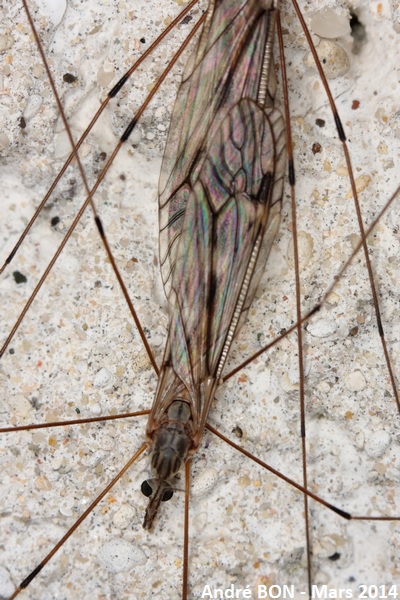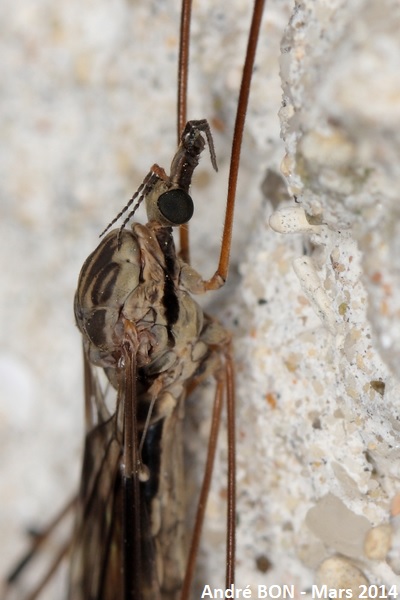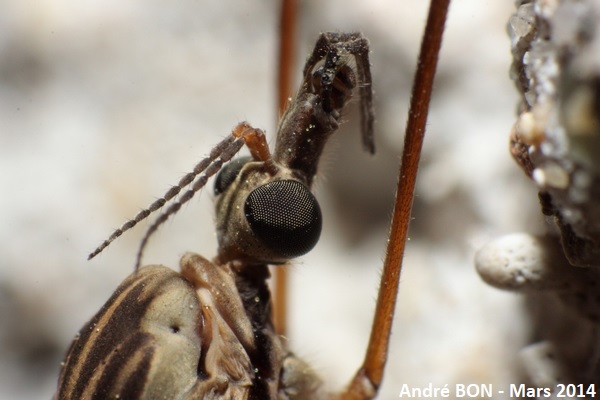



| Tipula rufina (Meigen, 1818) |




|
|
Scientific name: Tipula rufina (Meigen, 1818) Common name: French name: Order: Diptera Family: Tipulidae Wingspan : Body size: 11 to 12 mm for males and 15 to 17 mm for females. Biotope: Geographic area: Europe including Iceland, Asia, Middle East, North Africa. Observation period : March to September. |
Tipulidae, also called Crane Flies, are remarkable by their very long and fragile legs which can easily detach from the body. You can recognize the members of the Tipulidae family by the V-shape suture of the mesonotum, on the upper side of the thorax between the base of the wings, by their long snout and by they wing veins with two anal veins reaching the edge of the wing. The Crane flies of the Tipula genus are characterized by the sub-costal vein joining the radial vein (Tipulinae family), by the presence of a discal cell, by long legs and by thread-like antennae with 13 articles. Tipula rufina is part of the group of crane flies showing nebulous and irregularly spotted wings (no darker spots along the costal edge nor transverse or longitudinal bands). The mesonotum, on the upper side of the thorax, bears four uniform dark stripes, that's to say not outlined with a darker colour. The R2 vein is complete and reaches the costal vein. Tipula rufina is easy to tell apart with the dark brown to black pleural stripe. This stripe is straight, thin and long and parallel to the edge of the thorax. It starts just at the back of the eye and extends up to the underside of the base of the wing. The head is grey. The two first articles of the antennae are yellow. The legs are yellowish orange with black tips on femurs and tibias. |
| [To know more about the Tipula rufina] [Next picture] [Top] |

|
Here is again one observation on the north wall of the house. The future broods are being prepared. |
| [To know more about the Tipula rufina] [Next picture] [Previous picture] [Top] |

|
I have shot this picture to study the wing veins. Either the picture is not sharp enough or I lack some experience but I am not able to assess whether the R2 vein is complete or not. The species identification is based on the observation of the lateral sides of the thorax, see the next picture. |
| [To know more about the Tipula rufina] [Next picture] [Previous picture] [Top] |

|
The straight and black pleural stripe indicates the Tipula rufina species. |
| [To know more about the Tipula rufina] [Previous picture] [Top] |

|
Here I have used a 24mm reversed lens to get a high magnification. The two first yellow articles of the antennae confirm Tipula rufina. |